Are you thinking of setting up a home gym with cheap gym equipment? There is a lot of cheap gym equipment available now. You can both improve your heart health and strength. If you have a limited budget, setting up a home gym is one of the best ways. It will save money and fulfill demands. The equipment in the following list is affordable:
1. Resistance Bands: These elastic bands are used in strength training. It is a cheap gym equipment having multipurpose fitness goals. You can use it for several workouts or exercises. Resistance bands are also widely used in physical therapy. Especially for patients who are suffering from muscular ailments. Such as those undergoing cardiac rehabilitation. It restores strength step by step.

Types of Resistance Bands
There are different types of resistance bands and cheap gym equipment available. Such as:
Loop bands: These are the most common type of resistance band. They come in a variety of colors and resistances and can be used for a wide variety of exercises.
Tube bands: These bands are like loop bands, but they have handles on each end. This exercise type of equipment makes it easier to grip. And it is more comfortable to use for some exercises.
Mini bands: These are small, loop-shaped bands. They are often used for lower body exercises or added difficulty to upper body exercises.
Flat bands: These exercise equipments are wide, flat bands. It is used for a variety of exercises. Such as core exercises, yoga poses, and Pilates exercises.
Figure-eight bands: These bands are shaped like figure eight. They are often used for shoulder exercises.
Benefits of Resistance Bands Cheap Gym Equipments
There are many benefits to using resistance bands, including:
Versatility: Resistance bands are an excellent all-around training tool. Because they can be used for a wide range of workouts. They are cheapest gym equipment.
Portability: You may carry them with you everywhere you go. Because resistance bands are small and light.
Cost-effectiveness: Resistance bands represent an extremely cost-effective choice for at-home workout gear.
Safety: Resistance bands offer consistent tension throughout an exercise’s range of motion. And make them a safe and efficient method of strength training.
Low impact: People with joint problems or injuries can enjoy resistance band exercises. Because they are low-impact exercise equipment.
Choosing Resistance Bands
If you choose resistance bands, you should check a few things. Such as:
Your level of fitness: If you’re just a beginner, you should use softer and cheap gym equipments of resistance bands. You can advance to heavier resistance bands as you gain strength.
What kinds of workouts would you like to do: Different kinds of resistance bands are needed as exercise equipment. For example, you wouldn’t want to perform an exercise where you have to use both hands to grip the loop band.
Your inclination personally: There are many hues and designs available for resistance bands. Select bands that you will love to wear.
2. Jump Rope: Swinging beneath the feet to be jumped over, a jump rope, often called a skipping rope. It is a length of rope with grips on either end. It’s a simple, low-cost fitness tool that may be used for a variety of exercises.
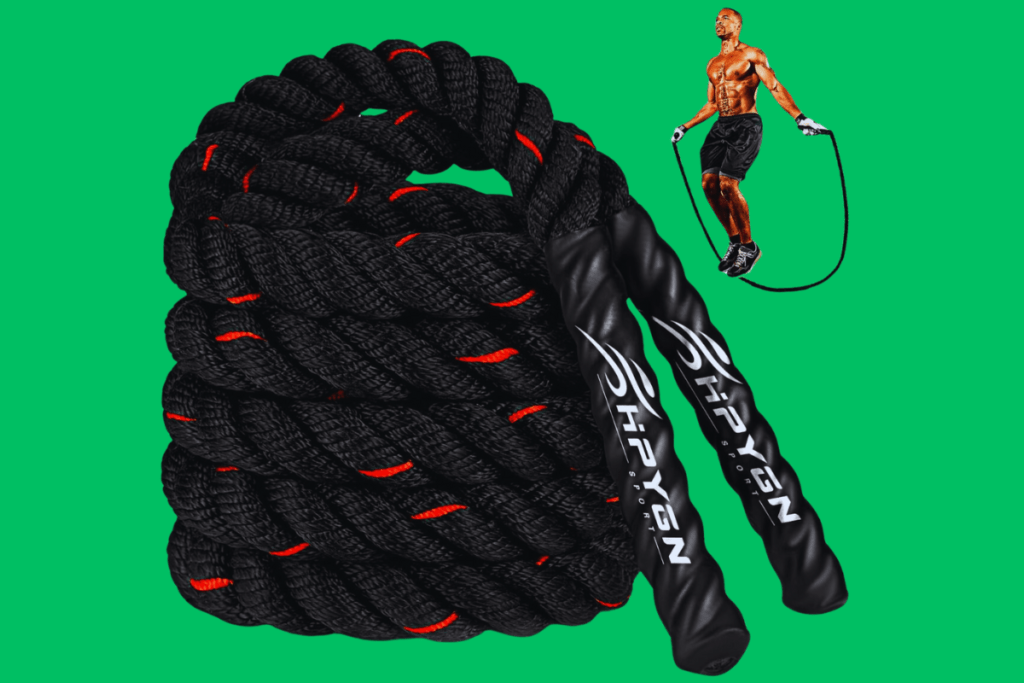
Jump rope and its details:
Materials: Jump ropes can be made from a variety of materials. Including plastic, leather, hemp, and beads. Your demands and tastes will determine the ideal material for a jump rope. Leather ropes are flexible and pleasant to hold. Moreover, hemp ropes are strong and suitable for outdoor use. Plastic ropes are cheap gym equipment and lighter than beaded ropes. But, beaded ropes can be visually pleasing and enjoyable to use.
Length: The length of a jump rope should correspond to your height. As a general rule of thumb, you should position yourself in the middle of the rope. Then reach the grips up to your armpits. You can change the length of the rope by knotting the handles or by buying a rope with adjustable handles.
Weight: A jump rope’s weight can also change. Although heavier ropes can be harder to swing, they can also provide for a more demanding workout. Lighter ropes are more comfortable to swing. Benefits of jumping rope. But they cannot offer as much exercise: Jumping rope is a great full-body workout. Cardiovascular workouts can strengthen your heart and increase your level of endurance. It can also improve your coordination, help you tone up, and burn calories.
Jump rope variations:
There are many controversies about jump rope exercises. Some basic variations of home gym setup are:
Basic jump: This is the most common jump rope exercise. Simply jump over the rope as it swings under your feet.
High knees: As you jump over the rope, bring your knees up high towards your chest.
Double unders: This is a more advanced jump rope exercise. It involves swinging the rope twice under your feet with each jump.
3. Dumbbells:
Look for adjustable dumbbells or a set of basic ones. They’re versatile and can be used for various exercises. ble dumbbells or a set of basic ones. They’re versatile and can be used for various exercises.
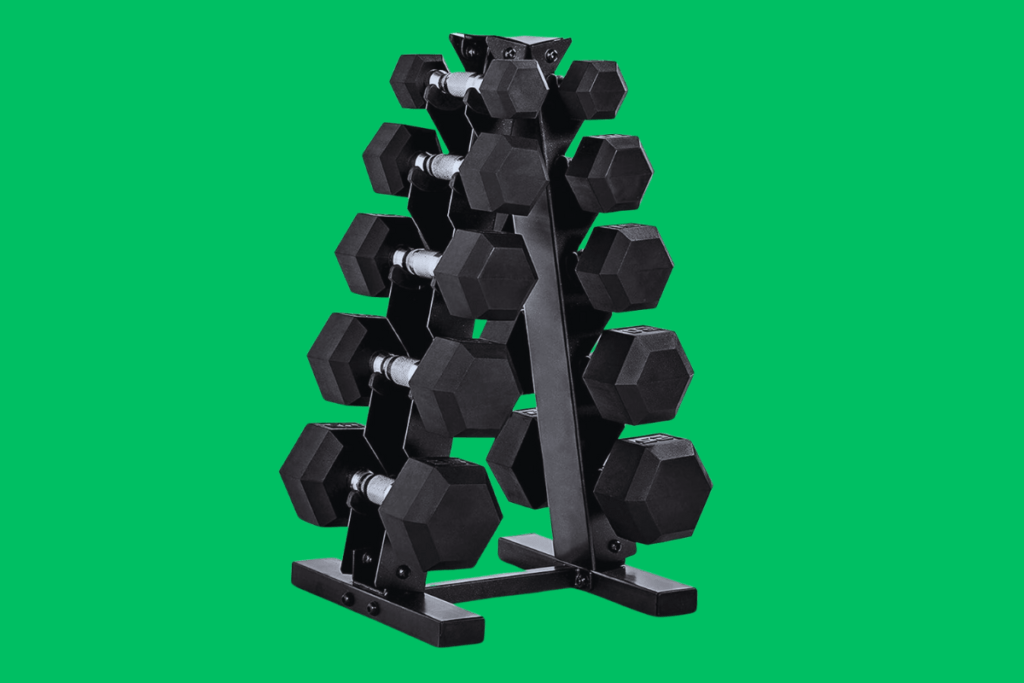
Exercise: Shoulder Press
How to Do It: Place your feet shoulder-width apart and, with your palms facing forward. Then grip a dumbbell in each hand at shoulder height. Once your arms are fully extended, press the weights overhead and then drop them back down.
How to Get Fit: Make shoulder presses a part of your upper body exercises. Try to complete three sets of ten to twelve repetitions. At the same time, pay close attention to your form and deliberate movements.
4. Kettlebell:
Kettlebells have become increasingly popular in fitness circles. Because they have versatility and effectiveness in providing a comprehensive workout. Everyone could afford it as it is a cheap gym equipment.
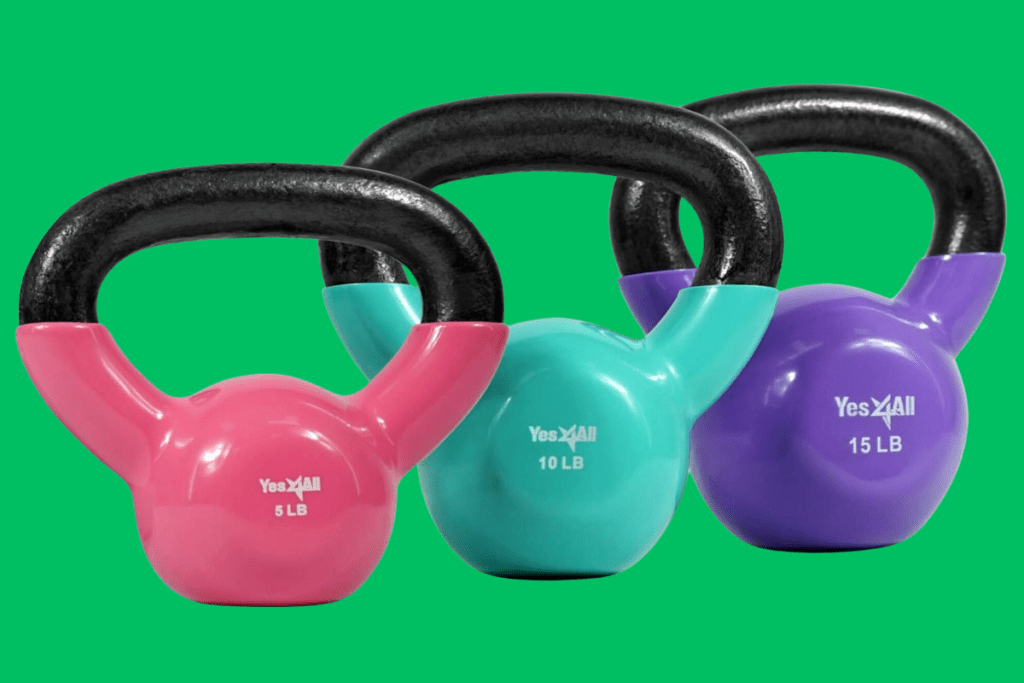
Here’s a detailed overview of kettlebells and their usefulness:
Design: Kettlebells are weights made of cast iron that have a handle and resemble cannonballs. Many dynamic exercises and movements are possible because of this unique design.
Functional Strength: Kettlebell workouts are great for developing functional strength and athleticism. Because they frequently replicate actions found in everyday life. Kettlebell workouts improve coordination and stability. They work for various muscle groups. They are also beneficial for both everyday activities and athletic performance.
Cardiovascular Conditioning: A good cardiovascular workout from a variety of kettlebell exercises. Many of them are very aerobic and rapidly increase heart rate. For example, swings are well known for their cardiovascular rate and burn calories.
Core Stability: To keep appropriate form and control, kettlebell exercises must have fundamental safeguards. Strengthening the lower back, obliques, and abdominal muscles, improves general stability. It also lowers the chance of injury.
Joint Health: Dynamic movements are a common feature of kettlebell exercises. It helps to increase joint flexibility and mobility. People who have tight muscles and joints or who spend a lot of time sitting down may especially enjoy this. Time Efficiency: Workouts with kettlebells are time-efficient. It enables users to complete a strenuous exercise program in a very short length of time. Circuit-style exercises that incorporate
Mental Focus: To do kettlebell exercises safely and successfully, mental focus is a must. This mental activity can lessen stress, increase general well-being, and improve cognitive performance. Kettlebells are a useful tool for enhancing general fitness, strength, and endurance. Kettlebell workouts can help you reach your fitness objectives quickly and effectively. Whether your goal is to burn fat, gain muscle, or enhance your sports performance.
5. Yoga Mat:
Useful for floor exercises, yoga, Pilates, and stretching routines. It provides comfort and support during workouts.

Yoga is a holistic discipline that has thousands of years of history and its roots in ancient India. It helps with breathing exercises, relaxation methods, meditation, and physical postures.
Here are some specifics on yoga:
Benefits for the body: Yoga offers a variety of asanas or physical postures. It builds tone, and stretch, and strengthens the muscles. Flexibility, balance, and posture can all be enhanced with regular practice. Additionally, other positions focus on particular body parts, like the legs, back, and core.
Benefits for the Mind: Yoga is well-known for its ability to improve mental health besides its physical benefits. It dealt with stress, anxiety, and sadness with movement, breath awareness, and meditation. Yoga encourages mindfulness and present-moment awareness. It promotes a sense of calm and inner peace.
Breath regulation (Pranayama): The techniques of Pranayama form the regulation of the breath. Yoga practitioners can improve their physical and emotional well-being by breathing exercises. The benefits of pranayama include mental calmness, heightened energy, and enhanced respiratory health.
Stress Reduction: Yoga’s capacity to lower stress and encourage relaxation is one of its main advantages. Yoga practitioners seek to relieve mental and physical tension through pranayama and meditation. It results in a greater sense of ease and well-being.
Spiritual Development: Although yoga is not a religious practice. Thus, it has strong spiritual foundations in Buddhism, Hinduism, and other old traditions. Yoga offers introspection, self-discovery, and connection to a higher power or universal awareness. And for some practitioners, it functions as a spiritual journey.
Reachable by All: Yoga adopts people of all ages. Fitness levels and talents are some of its outstanding features. There are yoga poses that can fit your requirements and ambitions of a home gym setup.
Variety of Styles: There are many different styles of yoga. Each style has its emphasis and approach. Some popular styles include Hatha, Vinyasa, Ashtanga, Bikram, and Kundalini yoga. Each style offers a unique combination of physical postures, breathing techniques, and meditation.
6. Medicine Ball:
Great for improving coordination, toning muscles, and training the core. Select the one whose weight is in line with your degree of fitness. Medicine balls are a type of versatile training equipment. People have been using it for years to improve their strength, power, and level of fitness.

Some advantages of including medicine balls in your workout routine are as follows:
Strength and Power: Medicine ball exercises often involve explosive movements like throws, slams, and twists that target many muscle groups. Because these movements help in building muscle strength and power. Medicine balls are especially good for athletes.
Functional Training: Many medicine ball exercises replicate natural, functional movements such as tossing, twisting, and lifting. That is relevant to daily activities and sports-specific movements. This functional training element can help to improve coordination, balance, and agility for fitness levels.
Versatility: Medicine balls can be used for a wide range of workouts. It targets different muscle groups and gaits. Because they come in a variety of weights, sizes, and textures. Whether you’re performing lunges, squats, overhead lifts, or rotations, medicine balls suit your needs. As it is a cheap gym equipment, you can afford it easily.
Core Stability: To stabilize the body and control the ball’s movement, the core must be engaged during many medicine ball movements. Thus, using medicine balls can help strengthen the lower back, obliques, and abdominal muscles. It helps to improve posture and cut the chance of injury.
Improved Balance and Coordination: Medicine ball workouts are dynamic, requiring you to balance and coordinate your motions. It manages the ball’s weight. Proprioception and neuromuscular control. These are critical for general athleticism and injury prevention. These may gradually increase as a result.
Accessibility and Portability: Medicine balls are more suitable for home gym setup, outdoor training, and gym sessions. Because they are more small and portable than other gym equipment. They are accessible to a wide range of individuals due to their affordable pricing and size.
Fun and Variety: Adding medicine balls to your exercise regimens can make them more enjoyable and varied. You can push your body in new and creative ways while maintaining an engaging training routine.
Whether your goals are to increase strength, power, stability, or general health. Medicine balls are a versatile and practical training tool that improves at home gym. Every exercise program should start with the appropriate weights. And then increased to cut the risk of injury and maximize the benefits.
7. Pull-Up Bar:
If you have a sturdy door frame, a pull-up bar is an inexpensive way to work your upper body. So, it would be best for your home gym setup.
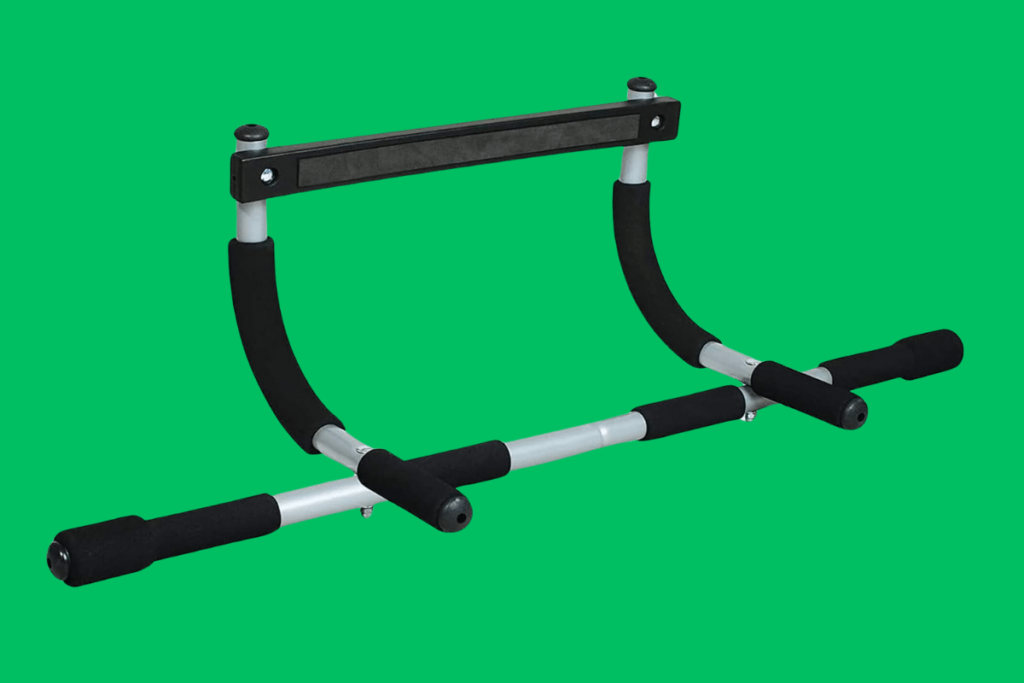
Exercise: Assisted Pull-Ups
How to Do It: Use a resistance band looped around the bar and under your feet for help. Grab the bar with an overhand grip, hang at arm’s length, then pull yourself up until your chin is above the bar.
How to Be Fit: Incorporate assisted pull-ups into your back or upper body workout routine. Aim for 3 sets of 6-8 repetitions. Gradually reducing help from the resistance band as you get stronger.
8. Suspension Trainer (TRX): Even if the price may be a little higher than others, it’s still affordably priced. At the same time, it provides a variety of exercises that target different muscle regions.

Method: Stretch your arms and lean back while keeping an overhand hold on the TRX handles. Pull yourself up toward the handles by squeezing your shoulder blades together. Then lower yourself back down.
How to Be Fit: Include TRX rows in your upper body or back workout routine. Set your aim for 3 sets of 10-12 repetitions. Then Consider adjusting the angle of your body to increase or decrease resistance.
9. Foam Roller: Not for workouts per se, but essential for post-workout recovery. It helps relieve muscle tension and soreness.
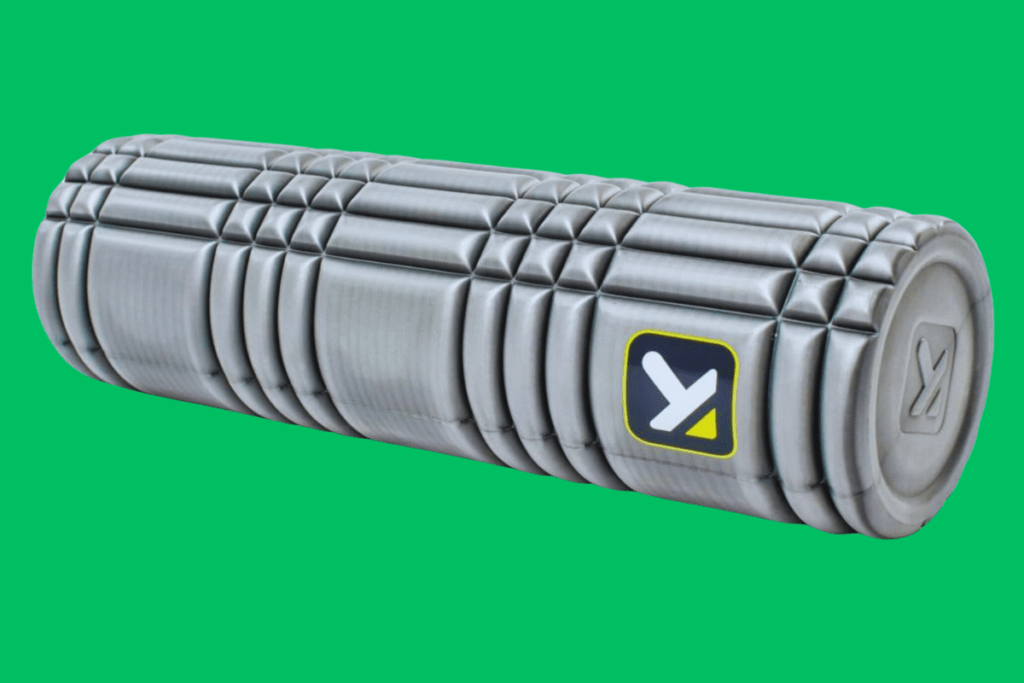
Method: Apply pressure and release with the foam roller to target muscle groups. Such as the back, hamstrings, quadriceps, and calves. Roll over tense or painful spots back and forth.
How to Be Fit: Use foam rolling as part of your recovery process. It helps ease soreness in your muscles after a workout. Focus on the tight spots in each muscle group for a duration of one to two minutes.
10. Ankle Weights:
Ankle weights are cheap gym equipments and strap-on weights. They are designed to be worn around the ankles during exercise. They add resistance to lower body movements.

Here are some of the benefits of using ankle weights:
Increased Intensity: Using ankle weights you can walk harder. You can easily cover the movements like leg lifts, kicks, and hip abductions. Strength increases and enhanced muscular activation may eventually result from this extra resistance.
Enhanced Strength and Endurance: Ankle weights boost the development of the legs’ muscles. Ankle weights help particularly, the quadriceps, hamstrings, glutes, and calves. It protests the lower body actions. As a result, strength and endurance may increase sooner. Particularly when performing activities that target specific muscle groups.
Enhanced Cardiovascular Workout: Wearing ankle weights you can increase your aerobic exercise. You can also gain more cardiovascular advantages. By wearing ankle weights when you jog, walk, or do other aerobic exercises. An increase in resistance will force the heart and lungs to work harder. As a result, it improves cardiovascular fitness.
Improved Balance and Stability: Ankle weights challenge your balance and stability. It works to add resistance to coordinated movements like side kicks and leg lifts. Eventually, this may lead to improved stability and balance. And it is important for preventing mishaps and falls, especially for elderly people.
Ankle weights should be used carefully and with appropriate form. These help to prevent strain or damage. When you gain strength and fitness, it would be better for you to begin with smaller weights as well as cheap gym equipments. And progressively increase the resistance rates.
Furthermore, when engaging in high-impact exercises. If you do so, you can raise your risk of injury, such as running or leaping. Then make sure to use appropriate form and stay away from utilizing ankle weights. Speaking with a physical therapist or other fitness expert can help you use ankle weights safely and effectively.
Keep in mind that you don’t now need any of these. Start small with a few basic items for your home gym setup. Then gradually add more at home gym as your fitness goals change. It would be the best decision to buy equipment online or at nearby retailers to save even more money. You can also repair quickly if your sellers exist nearby area.










